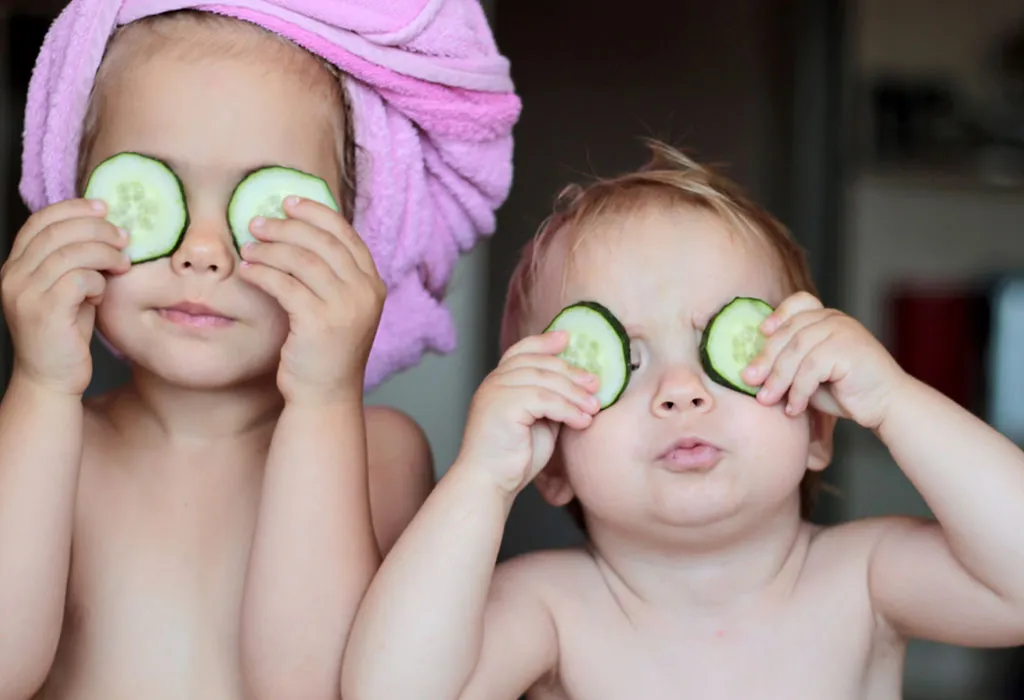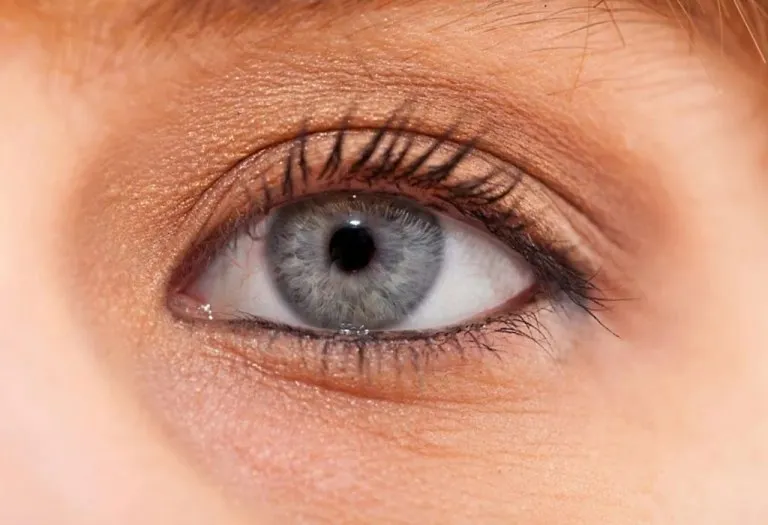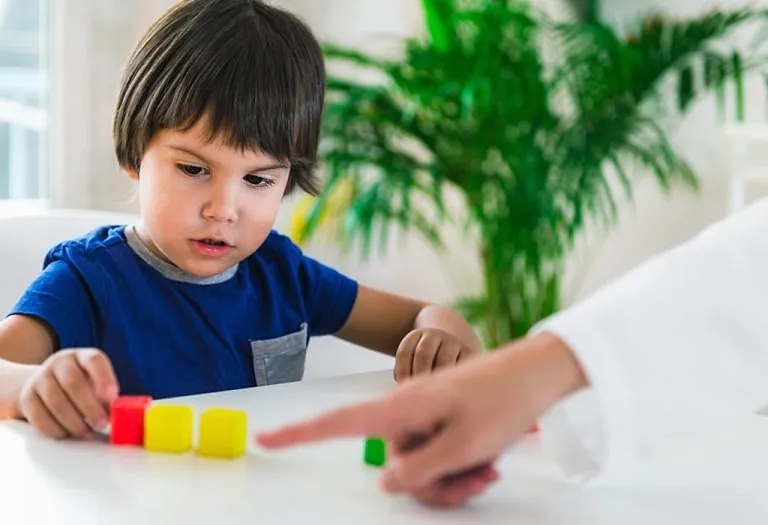Dark Circles Under Eyes in Kids – Causes and Treatment

- What Do Dark Circles in Children Mean?
- What Causes Dark Circles in Children?
- Symptoms of Dark Circles in Children
- Dark Circles in Kids – Diagnosis
- Dark Circles in Children – Possible Medical Complications
- Treatment for Dark Circles in Children
- Home Remedies for Dark Circles in Kids
- Tips to Avoid Dark Circles
- When to Consult a Doctor
- FAQs
The health and welfare of a child is every parent’s biggest concern and priority. One of the most commonly missed indicators of something not being right with your child can be the dark circles underneath their eyes. It is easy for parents to stress about their beautiful and healthy child suddenly looking like a racoon. While it may decode stress and work-life imbalance among adults, it is less common among children and may happen because of very common causes or some serious underlying condition.
Therefore, it is imperative for parents to keep an eye out for their children’s regular health and symptoms. Let’s find out why some children develop dark circles, whether it is serious, how parents can treat them, and when to consult a paediatrician about dark circles under the eyes of kids.
What Do Dark Circles in Children Mean?
The pigmentation underneath the eyes is commonly called dark circles or racoon eyes. These spots or discolouration of the skin in the region directly under the child’s eyes is not usually painful, uncomfortable or harmful by itself. However, they can be signs of illness, fatigue, or allergies, and a big concern for parents is whether
they will remain as the child grows older.
What Causes Dark Circles in Children?
Dark circles are known to appear in children or adults when the skin underneath their eyes becomes thin, exposing the blood vessels in the region and causing irregular discolouration. The causes may include:
1. Sleep Deprivation
Lack of sleep and consistent exposure to screens of gadgets like smartphones, computer, TV, etc., can also cause dark circles under the eyes (1).
2. Nose Congestion and Sinus Infection
Prolonged congestion of the nasal cavities can pressurise the veins under the skin, restricting blood flow and ultimately leading to dark circles under kid’s eyes (2). It is also observed that children with dark circles are usually persistent mouth-breathers, which can also increase the risk of dental abnormalities (3).
3. Contact Dermatitis
This is a skin condition that could be contagious and lead to red, patchy, or dry skin, making itchy and uncomfortable for the child.
4. Fatigue
Lack of rest and fatigue by constantly opening the eyes can develop pigmentation under the eyes, commonly known as dark circles.
5. Allergies
Allergies causing nasal congestion can also result in dark circles. Common allergens include dust, pollen, animal dander, and moulds.
6. Genetics
Dark circles can also be hereditary (4). If a child has dark circles without any other symptoms, then it might be genetic. For instance, the father and the daughter may share the same facial features, including dark circles. The severity can vary from mild to heavy.
7. Asthma
According to the Asthma and Allergy Foundation of America, dark circles can be an early sign of asthma (5). Furthermore, prolonged allergic rhinitis is known to be linked to asthma (6).
8. Snoring
Snoring in children is often due to enlarged adenoids located at the back of the nasal passages. Large adenoids can cause snoring, frequent mouth breathing during sleep, and a blocked nose. Dark circles are generally observed in children with enlarged adenoids.
9. Anaemia, Especially Iron Deficiency
Although there isn’t much evidence to link anaemia directly to dark circles in children, it is one of the common causes of dark circles in adults (7). However, if your child appears pale, weak, and paleness under the eyes, it’s important to consult a doctor to check for the symptoms of iron deficiency or anaemia (8).
They can also be caused by:
- Accidental or Non-Accidental Trauma
- Abnormal Skin Pigmentation
- Eczema
- Excessive exposure to the sun
- Food Allergies
- Latex Allergy
- A reaction to rubber
- A response to elastic
- Allergy to detergent
- Allergies caused by dyes
- Reactions to cosmetics
- Reactions to copper, metal or wire.
- Eye irritation
- Neuroblastoma (9)
For further causes of dark circles in children and an in-depth diagnosis of the condition, please contact a paediatrician.
Symptoms of Dark Circles in Children
The most common symptom in children is discolouration or irregular pigmentation right underneath the eyes. In rare situations, it may turn out to be a type of cancer known as neuroblastoma, which is a malignant tumour that affects the sympathetic nerves.
Here are a few symptoms that you should look for in case your child has dark circles to decide if you need to take him to a paediatrician immediately.
- Itchy eyes with swelling could be a sign of conjunctivitis.
- Coughing may signal an allergy.
- Difficulty in breathing could be a sign of an allergy or infection.
- A headache could be a sign of problems with the eyes, allergies or infections.
- A runny nose and dark circles could be a sign of impending flu.
- A sore throat that could also mean your child has allergies.
- Nasal congestion can be a sign of either the flu or allergies.
- Nausea and vomiting could signify severe allergies or an infection.
- Diarrhoea could be a sign of stomach flu.
- Skin irritation could be a sign of eczema or allergies.
- White spots on the throat or tonsils could be a sign of severe allergies and tonsillitis.
- Sudden onset of cough that could be a sign of anaphylaxis (a life-threatening allergic reaction).
- Blurry eyes could be a sign of impending vision loss.
- Rashes on the back and throat could be a sign of allergies.
Dark Circles in Kids – Diagnosis
Diagnosing the underlying cause of dark circles in children may include blood tests, sleep studies and urine tests. But, at first, the paediatrician will ask a bunch of questions to deduce what the symptoms suggest. Often, children develop dark circles due to allergies, but it is always better to rule every medical condition out to provide immediate medical aid to your little one.
Here are some of the questions that your health provider/paediatrician could ask.
Questions Your Health Provider May Ask You
During the examination and diagnosis process, the doctors may ask you some routine questions. These include:
- If there is a cough, how long has there been one? How frequent is it?
- In case there are rashes, when did they first manifest?
- Is your child allergic to anything you know of?
- How is your child’s sleep pattern?
- Have you tracked your child’s body temperature? If so, has it been at a stable temperature or is it fluctuating? Or, what is the highest temperature you’ve tracked so far?
As mentioned earlier, these questions will help the paediatrician deduce the possibilities of medical conditions/allergies and provide accurate treatment to your little one.
Most of the time, dark circles are nothing to worry about. However, some conditions with dark circles as one of the major symptoms may lead to severe medical complications. At times, even failure in treating dark circles could lead to complications. Let’s take a look at what they could be.
Dark Circles in Children – Possible Medical Complications
Dark circles, if left undiagnosed and untreated, could lead to some major complications like:
- The existing infection may spread
- Loss of vision
- Chances of Anaphylaxis
- Hearing loss in the child
- Delayed growth development in the child
Now, let’s take a look at the treatments available for dark circles in children.
Treatment for Dark Circles in Children
Here are some treatments that can help improve the appearance of dark circles and also treat the underlying conditions diagnosed by the doctor.
- Most allergy-related causes for dark circles, like a runny nose, headaches, throat irritation, coughs, rashes, etc., can be treated through antihistamines.
- Rest is recommended to combat fatigue. Additionally, it is important for them to engage in physical activities to ensure your child’s well-being (10).
- If your child goes out in the sun for long periods, it is advised to use a sunscreen that has the required SPF. For children, the recommended SPF is 30 or higher.
- In case of trauma, please consult your nearest physician immediately.
- Avoid feeding your child foods he may be allergic to. Immuno-therapy is recommended in cases of severe allergic reactions that can’t be avoided but should be given if advised by your doctor.
- Using eczema creams and lotions can help battle eczema.
Home Remedies for Dark Circles in Kids
Here are some home remedies that have little or no side effects and can help improve the appearance of dark circles:
- Using cool tea bags on your child’s eyes can help alleviate some strain from the muscles in the region surrounding the eyes and provide some relief from fatigue.
- Cucumber slices on the eyes are a well-known method to relax the region around the eyes and help combat dark circles.

- Placing cold spoons on top of your child’s eyes may help relieve fatigue.
- Cotton balls soaked in cold water also work well in combating dark circles.
- Massaging your child’s eyelids gently when closed can help relieve stress temporarily.
- Iron-rich food like spinach can help increase the level of iron in the body and, over time, fight against dark circles caused by a deficiency of iron.
Now, let’s take a look at ways to avoid dark circles in kids.
Tips to Avoid Dark Circles
There are numerous ways to avoid dark circles. Here are some tips to help you along the way:
- Maintain a healthy and nutritionally balanced diet.
- Ensure your child gets enough sleep for his age.
- Exercising is important. Ensure your kid has an active lifestyle.
- Iron supplements and vitamin supplements can aid in ensuring nutritional balance which can help fight and avoid dark circles. You must check with a paediatrician if your kid needs any of these supplements and get them prescribed.
- Control the screen time. Too much exposure to mobile phones, tabs, and televisions can stress your child’s eyes.
- Don’t overexpose them to sunlight. Make sure the correct SPF is used on them when they are outdoors.
When to Consult a Doctor
Neuroblastoma is a rare cancer that can cause dark circles under and around the eyes. It almost looks like the child has two dark, punched eyes. One of the best ways to detect the seriousness of this is by analysing the other serious symptoms your child may be having, along with dark circles under the eyes. If you notice any unusual and intense symptoms in your little one, then you should consult a paediatrician without any delay.
FAQs
1. Can an inefficient liver or liver issues cause dark circles in kids?
The appearance of dark under eyes in kids is not linked to liver issues.
2. Can reducing screen time for children can reduce the intensity of dark circles in children?
Excessive screen time can cause stress in the eyes and insomnia, which may lead to dark circles under the eyes (11). Restricting screen exposure can help reduce bags under kids’ eyes.
3. How much sleep does my child need?
According to the CDC, one to two-year-old toddlers should get 11-14 hours of sleep daily, three to five-year-old preschoolers should have 10-13 hours of daily sleep, and school-going 6 to 12-year-old elementary kids should have at least 9-12 hours of sleep daily (12).
4. My child excessively rubs eyes and cries a lot. Can it cause dark circles under the eyes?
Excessive crying an rubbing the eyes may cause dark circles under the eyes of children as it rubbing irritates the skin around the eyes, causing it to inflame and make the area look darker (10).
5. Does vitamin deficiency cause dark circles under the eyes in children?
No, contrary to popular belief, vitamin deficiency does not cause dark bags under the eyes (13).
Even the smallest of symptoms can lead to extreme consequences when left untreated. Dark circles could be completely harmless but could also be a sign of severe conditions. It is, therefore, highly recommended that if your child has “racoon eyes”, you must consult your nearest medical care advisor/paediatrician.
References/Resources:
1. Dark circles under the eye; About Kids Health; https://www.aboutkidshealth.ca/dark-circles-under-the-eyes
2. Kang. M, Mo. F, Witmans. M, et al.; Trends in Diagnosing Obstructive Sleep Apnea in Pediatrics; Children (Basel).; PubMed Central; https://www.ncbi.nlm.nih.gov/pmc/articles/PMC8947481/; February 2022
3. Sarkar R, Ranjan R, Garg S, Garg VK, Sonthalia S, Bansal S. Periorbital Hyperpigmentation: A Comprehensive Review. J Clin Aesthet Dermatol.; PubMed Central; https://www.ncbi.nlm.nih.gov/pmc/articles/PMC4756872/; January 2016
4. Knowing and Treating Your Early Warning Asthma Signs Can Reduce the Need for Emergency Room Visits; Asthma and Allergy Foundation of America; https://community.aafa.org/blog/knowing-and-treating-your-early-warning-asthma-signs-can-reduce-the-need-for-emergency-room-visits
5. Small. P, Keit., P. K, Kim. H; Allergic rhinitis. Allergy Asthma & Clinical Immunology; https://aacijournal.biomedcentral.com/articles/10.1186/s13223-018-0280-7#citeas; September 2018
6. Dark circles can arise from health issues, lifestyle or genetics; UCLA Health; https://www.uclahealth.org/news/article/dark-circles-can-arise-health-issues-lifestyle-or-genetics; December 2023
7. Anemia; Boston Children’s Hospital; https://www.childrenshospital.org/conditions/anemia#symptoms–causes
8. Neuroblastoma; MedlinePlus; https://medlineplus.gov/neuroblastoma.html
9. Dark Circles Under Eyes; Cleveland Clinic; https://my.clevelandclinic.org/health/symptoms/23128-dark-circles-under-eyes#care-and-treatment
10. Screen Time Insomnia; CHOC; https://choc.org/health-topics/screen-time-insomnia/
11. Sleep; CDC; https://www.cdc.gov/sleep/about/?CDC_AAref_Val=https://www.cdc.gov/sleep/about_sleep/how_much_sleep.html
12. WHAT ARE THOSE DARK CIRCLES UNDER MY CHILD’S EYES?; Univerity of Utah; https://healthcare.utah.edu/the-scope/kids-zone/all/2021/02/what-are-those-dark-circles-under-my-childs-eyes; February 2021
Also Read:
Eye Care Tips in Kids
Eye Problems in Children
Causes of Cataracts in Kids
Excessive Blinking of Eyes in Kids
Was This Article Helpful?
Parenting is a huge responsibility, for you as a caregiver, but also for us as a parenting content platform. We understand that and take our responsibility of creating credible content seriously. FirstCry Parenting articles are written and published only after extensive research using factually sound references to deliver quality content that is accurate, validated by experts, and completely reliable. To understand how we go about creating content that is credible, read our editorial policy here.
























